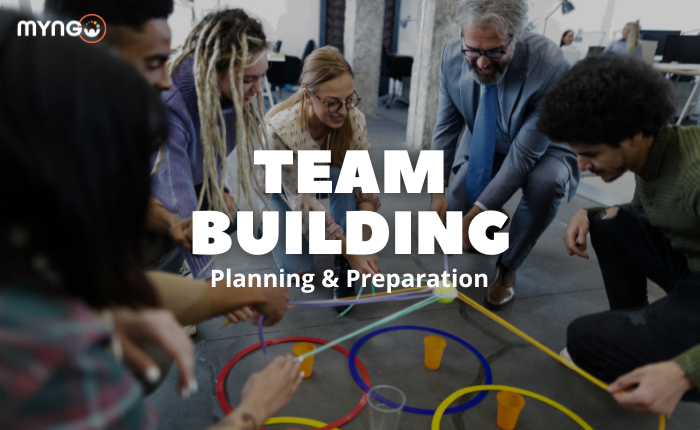
Welcome to Lesson 3!
In this lesson, we will delve into the essential steps for planning and preparing effective team-building activities. Careful planning and thorough preparation are crucial to ensuring that your activities run smoothly and achieve their intended objectives. You will learn how to set clear objectives, identify suitable venues and resources, establish safety guidelines, develop detailed activity plans, and assign roles within the facilitation team.
Learning Objectives
- Set clear objectives and outcomes for team-building activities.
- Identify suitable venues and resources.
- Establish safety guidelines and risk management protocols.
- Develop a detailed activity plan and schedule.
- Assign roles and responsibilities within the facilitation team.
Lesson Content
Setting Clear Objectives and Outcomes for the Activity
Before initiating any team-building activity, it is vital to define clear objectives and desired outcomes. Objectives serve as a roadmap, guiding the design and execution of the activity to ensure it meets the needs of the participants and achieves the intended goals.
Example
If the objective is to enhance communication skills within the team, the desired outcome might be for participants to demonstrate improved active listening and verbal communication abilities by the end of the activity. This can be measured through follow-up discussions or feedback forms.
Steps to Define Objectives:
- Identify Needs: Assess the current dynamics of the team to identify areas that require improvement.
- Set SMART Goals: Ensure objectives are Specific, Measurable, Achievable, Relevant, and Time-bound.
- Align with Overall Goals: Make sure the objectives align with the broader goals of the organization or program.
Identifying Suitable Venues and Resources
The venue and resources available can significantly impact the success of your team-building activity. Choosing the right location and ensuring you have all necessary materials are critical to creating an effective and enjoyable experience.
Factors to Consider When Choosing a Venue:
- Size and Space: Ensure the venue can comfortably accommodate all participants and the planned activities.
- Accessibility: Consider the ease of access for all participants, including those with disabilities.
- Facilities: Check for necessary facilities such as restrooms, seating areas, and equipment.
- Environment: Opt for a location that supports the activity’s goals, whether it’s an outdoor space for physical activities or a quiet indoor setting for reflective exercises.
- Group Dimension: Assess the dynamics and size of the group to ensure the space can accommodate interactions effectively. For example, smaller groups might benefit from more intimate settings, while larger groups might need more spacious venues to facilitate engagement.
Example
For a trust-building exercise that involves physical activities, an outdoor park with ample space and minimal distractions would be ideal. For a problem-solving workshop, a conference room with whiteboards and AV equipment would be more suitable.
Establishing Safety Guidelines and Risk Management Protocols
Ensuring the safety of all participants is paramount. Establishing clear safety guidelines and risk management protocols helps prevent accidents and manage any emergencies that may arise during the activity.
Steps to Establish Safety Guidelines:
- Conduct a Risk Assessment: Identify potential hazards associated with the activities and venue.
- Create Safety Rules: Develop rules and guidelines to mitigate identified risks.
- Communicate Clearly: Ensure all participants are aware of the safety guidelines before the activity begins.
- Emergency Plan: Have a plan in place for emergencies, including first aid resources and contact information for local emergency services.
Example
If the activity involves physical challenges, such as a ropes course, safety guidelines should include wearing appropriate gear, checking equipment before use, and having trained personnel on hand. For indoor activities, guidelines might focus on fire safety and ensuring clear exits.
Developing a Detailed Activity Plan and Schedule
A detailed activity plan and schedule are crucial for the smooth execution of team-building activities. This plan should outline the sequence of events, timing, materials needed, and any specific instructions for facilitators.
Components of an Activity Plan:
- Activity Overview: A brief description of the activity and its objectives.
- Materials List: All materials and equipment required.
- Step-by-Step Instructions: Detailed instructions for facilitators on how to conduct the activity.
- Timing: A breakdown of the activity into time segments, including setup and debriefing.
- Contingency Plan: Backup plans in case of unforeseen issues, such as bad weather for outdoor activities.
Example
For a team scavenger hunt, the activity plan might include:
- Overview: Team-building scavenger hunt to promote collaboration and problem-solving.
- Materials: Clue cards, maps, pens, prizes.
- Instructions: Divide participants into teams, distribute clues, explain rules.
- Timing: 10 minutes for introduction, 1 hour for the scavenger hunt, 20 minutes for debriefing.
- Contingency: Indoor puzzle-solving activity in case of rain.
Assigning Roles and Responsibilities within the Facilitation Team
Clearly defined roles and responsibilities within the facilitation team help ensure that the activity runs smoothly and that all aspects are covered efficiently.
Key Roles in Facilitation Team:
- Lead Facilitator: Oversees the activity, ensures objectives are met, and manages the overall flow.
- Assistant Facilitators: Support the lead facilitator, manage smaller groups, and handle specific tasks.
- Logistics Coordinator: Manages materials, setup, and logistical aspects of the activity.
Example
For a complex team-building workshop, the lead facilitator might focus on guiding the overall session, while assistant facilitators manage breakout groups. The safety officer ensures all activities comply with safety standards, and the logistics coordinator ensures that all materials are available and set up correctly.
Additional Resources
-
“The Ultimate Guide to Team Building” by Kelsey Bishop (Blog Article)
-
Digital Tools
- Trello: For organizing tasks and timelines.
- Google Forms: For collecting participant information and feedback.
- Asana: For detailed project management and collaboration.